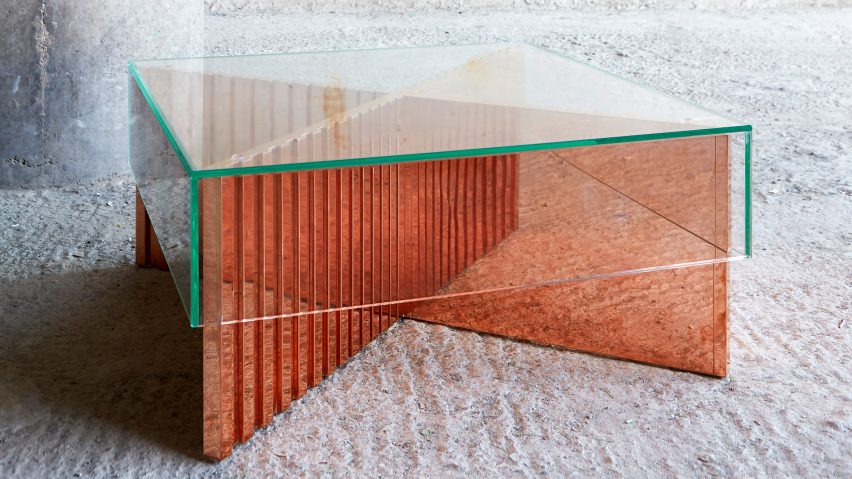
Aljoud Lootah's furniture collection takes cues from traditional areesh structures
Dubai-based designer Aljoud Lootah paid homage to the tradition of palm-leaf architecture in the United Arab Emirates with her latest furniture collection.
The collection takes its design cues from traditional areesh structures, in which vertical and horizontal poles of dried palm fronds are stacked together.
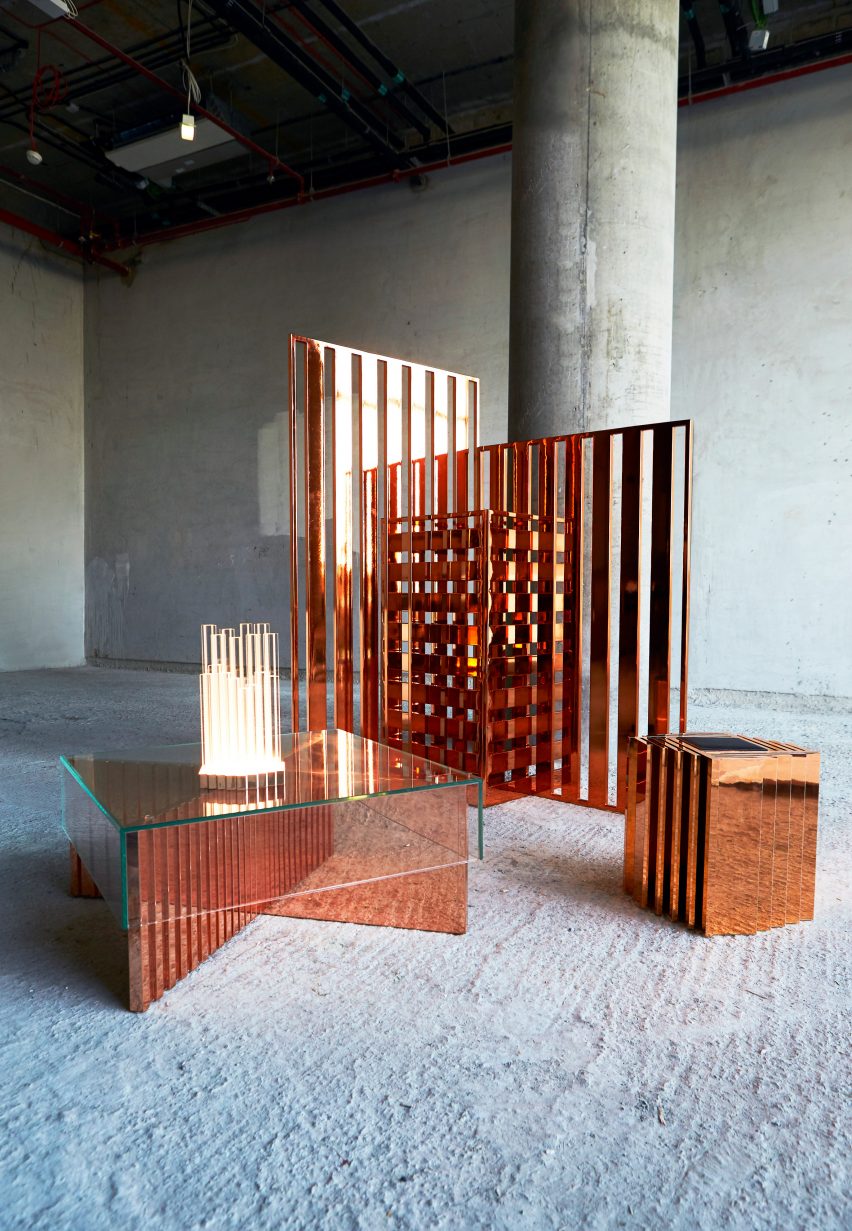
These were commonly used in the UAE as summer houses and majlises – the Arabic term for "places for sitting" – as they provided shelter from extreme weather, while the gaps in the walls allowed for ventilation.
Lootah reimagined these in copper-covered stainless steel for the room divider, with vertical and horizontal striated planes that intersect to create a freestanding structure. In the reflective material, the design creates a different interplay of light and shadow to its historic counterpart.
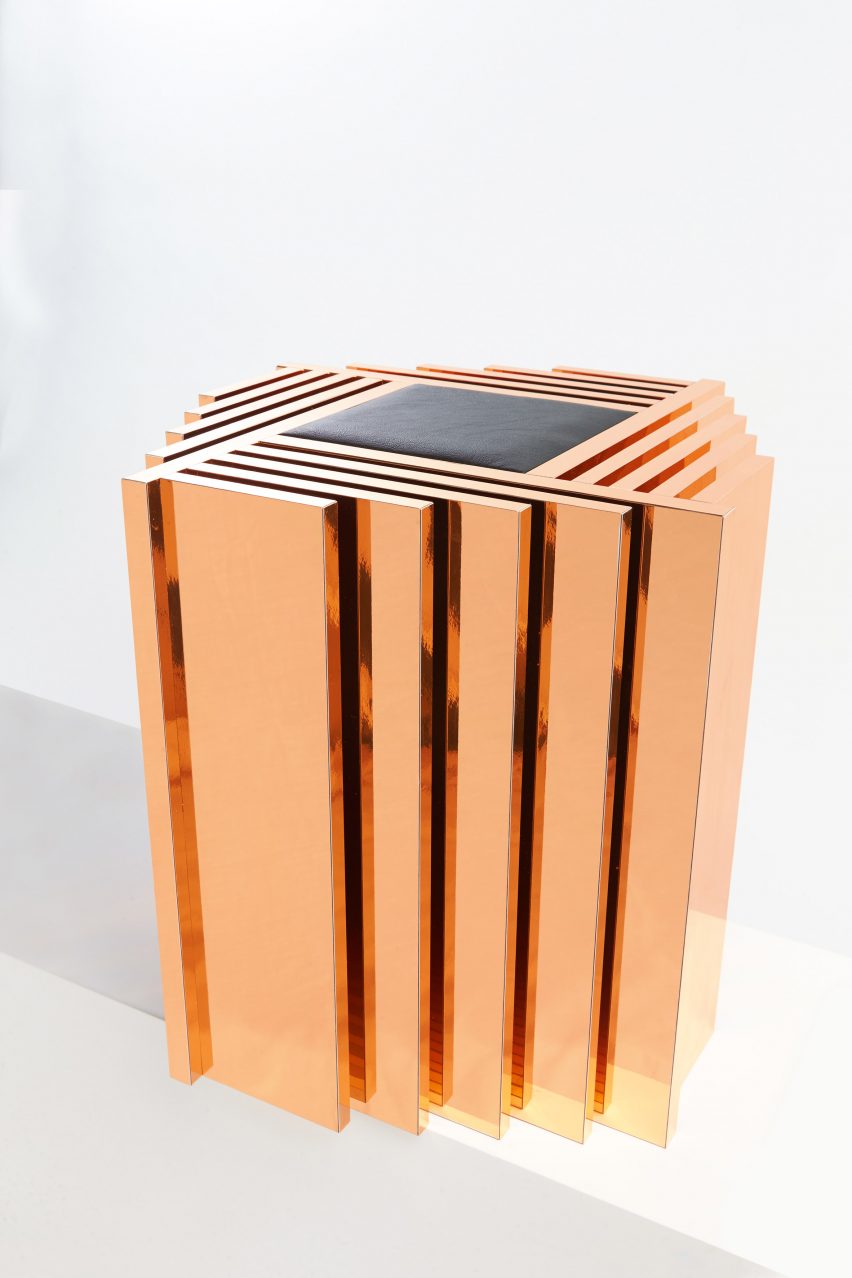
"Traditionally Areesh structures created walls protecting their interiors from the surrounding area," Lootah told Dezeen. "To juxtapose this, the copper used for the collection brings a new dimension in which the pieces reflect their surroundings."
The table light Lootah designed for the collection is formed of a cluster of hollow, vertical glass forms that sit above LED lights, which are embedded in a rose-gold electroplated metal base.
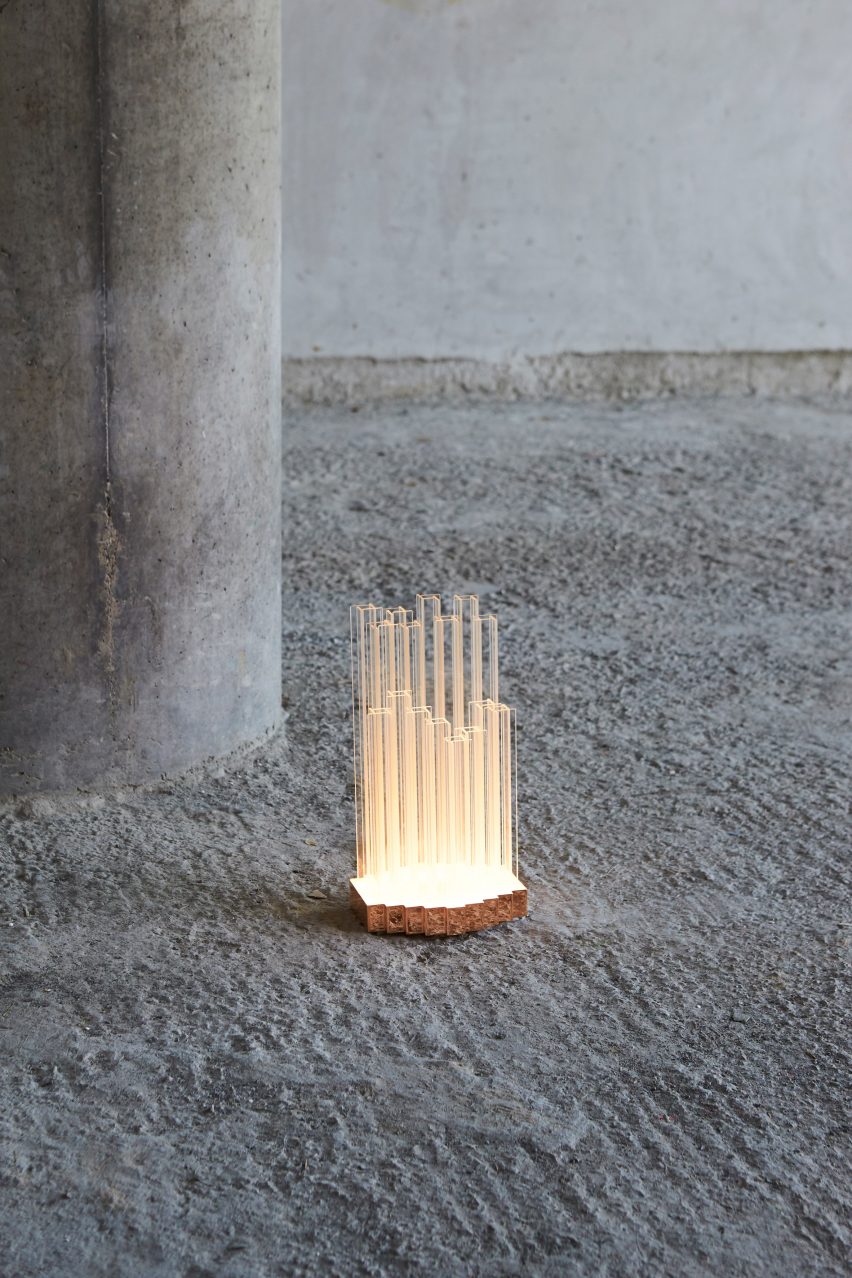
"The light structure was designed to reflect how, in the past, families lived together as a community, with areesh structures placed side by side," said Lootah. "I wanted to depict that concept of unity and wholeness by designing a base that holds multiple glass segments that represent the areesh."
The coffee table is formed of a horizontal copper cross, which is textured with raised lines on one side and is smooth on the other.
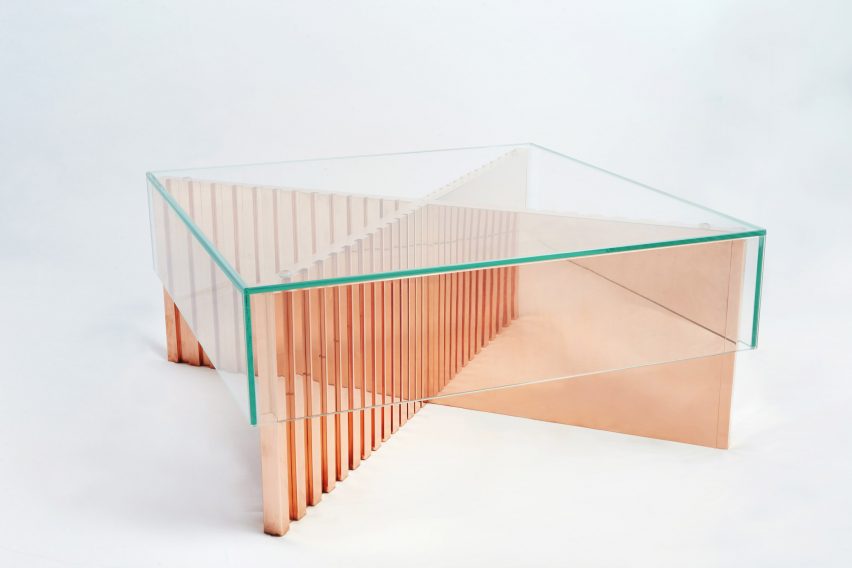
The latter is polished to reflect the adjacent lined surface, creating an interplay of surfaces and emphasising the geometry of its form.
"The lines placed on one side are designed to mimic the poles of the dried palm-leaf fronds where they would be placed vertically, side by side to create the walls," said Lootah. "The table interprets areesh through the play of pattern and reflections."
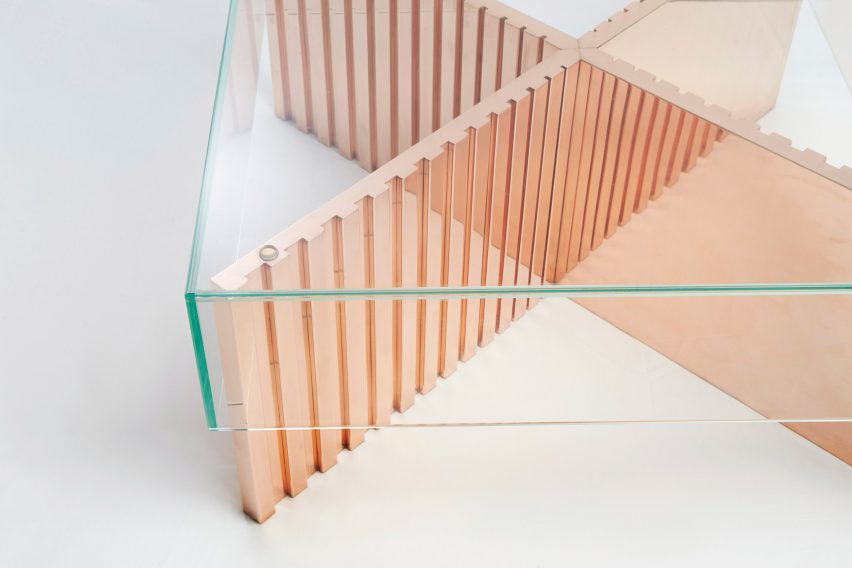
The glass tabletop was designed to reflect the original purpose of areesh structures of providing shelter, and extends to cover the sides of the table.
The sturdy stool is made of wood covered with a copper sheet. It centres around a square base, to which copper panels of various widths attach at 90-degree angles – reflecting the shapes of the extended sections of areesh structures.
Dubai's design scene has been fast-growing since the city launched its own design week in 2015.
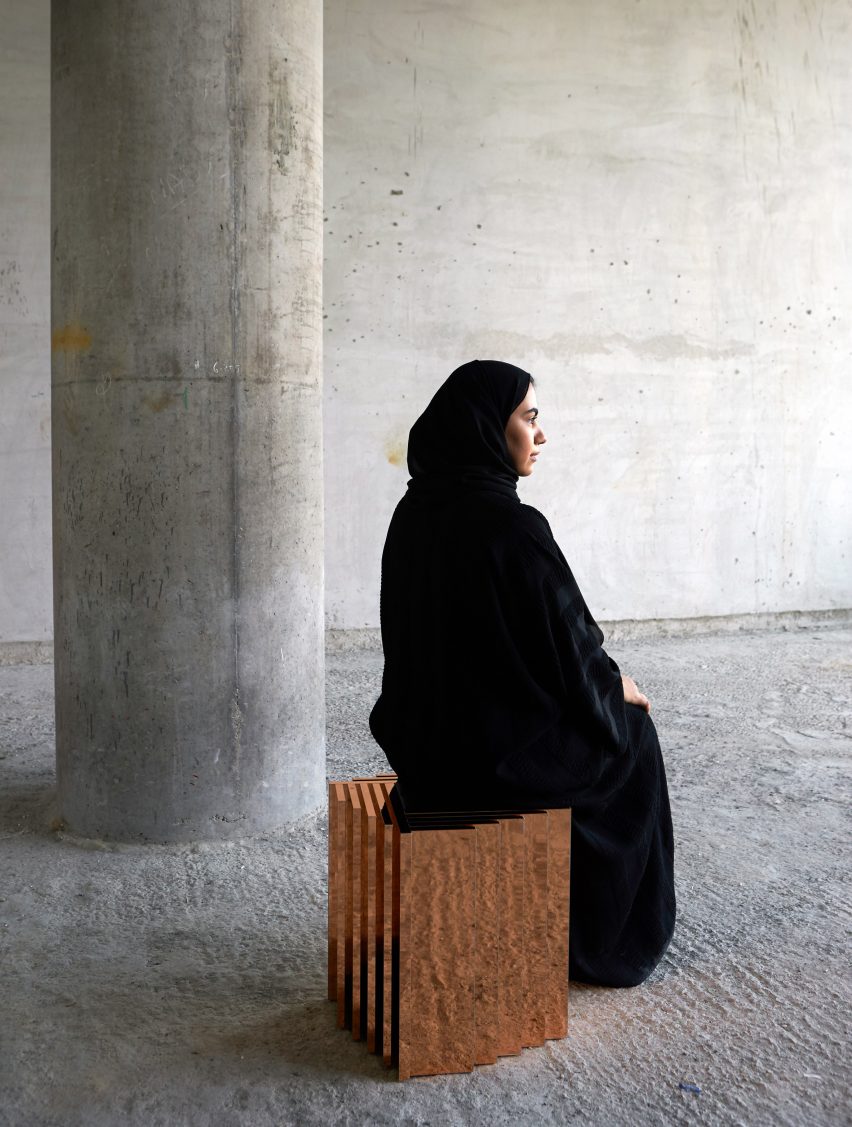
This year's festival took place from 13 to 18 November 2017, with the aim to strengthen Dubai's position as a global hub for the design and creative industries. Now in its third edition, the week involved over 550 designers who exhibited work at 200 events across the city.
The Dubai Design District, which acts as the hub venue, is a creative quarter being built from scratch in the United Arab Emirates city.
With phase one of three now complete, the second phase – a creative community of studios, galleries and a school designed by Foster + Partners – is expected to open in 2019.